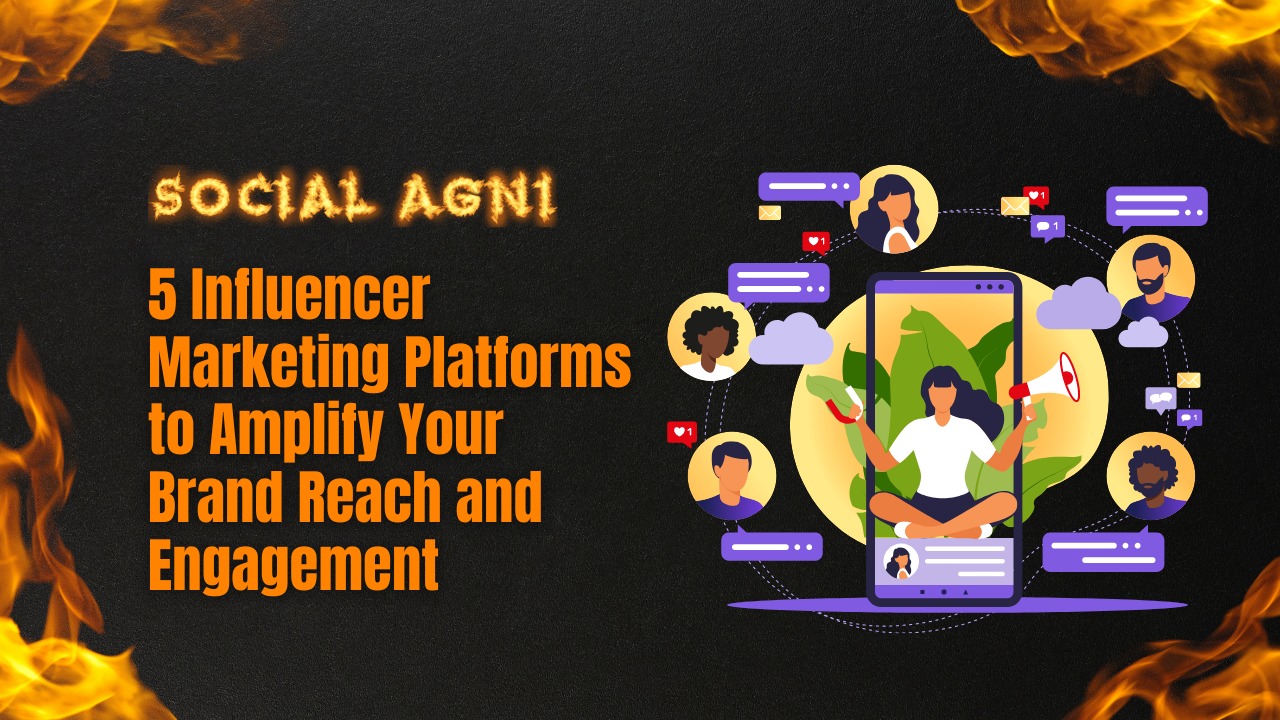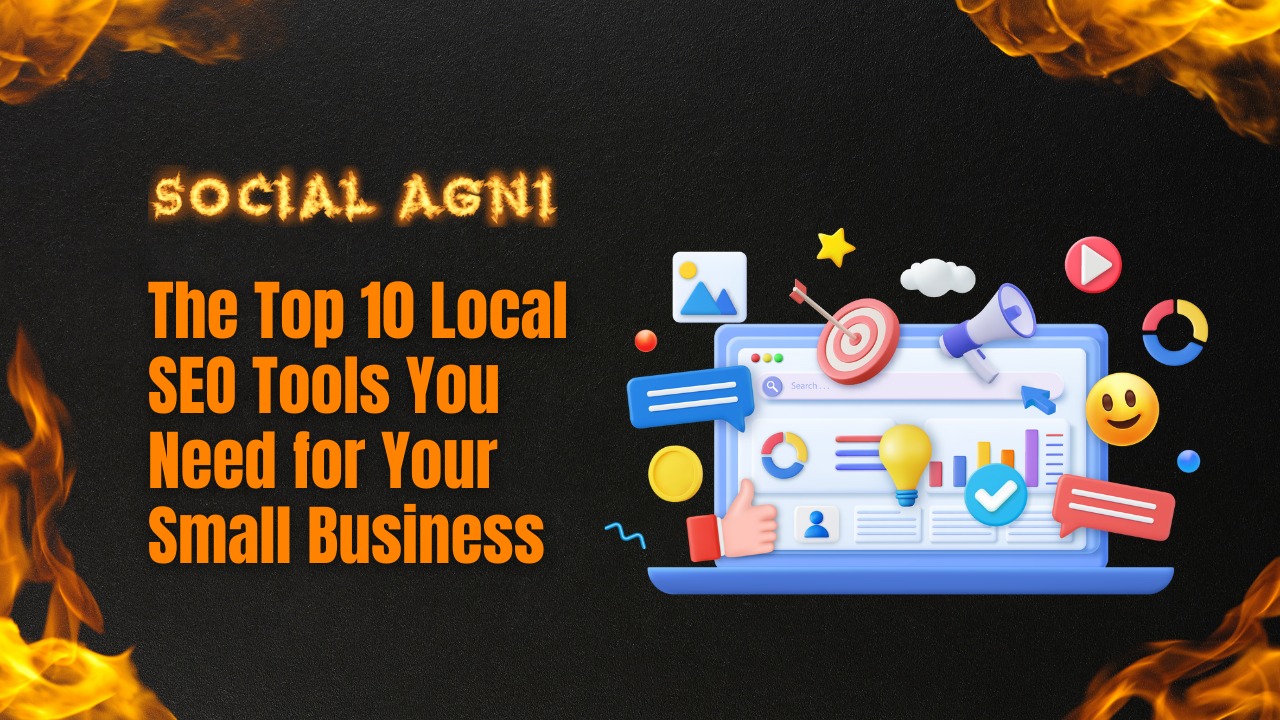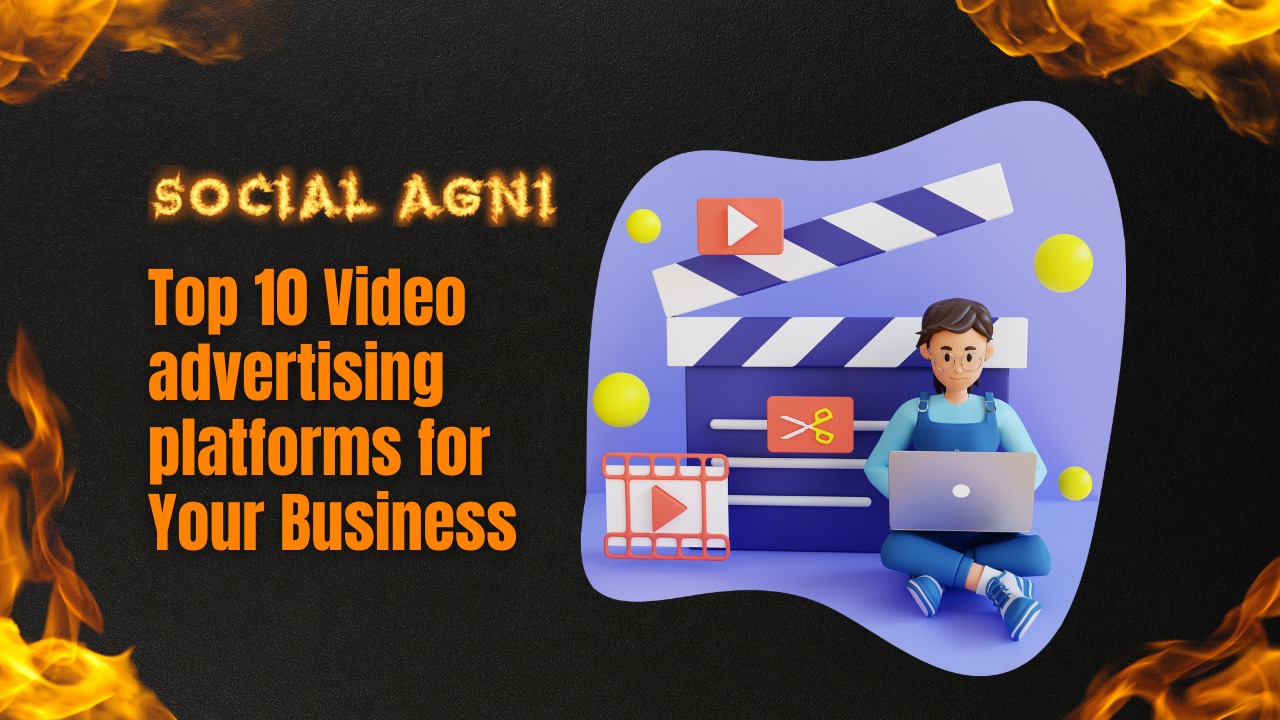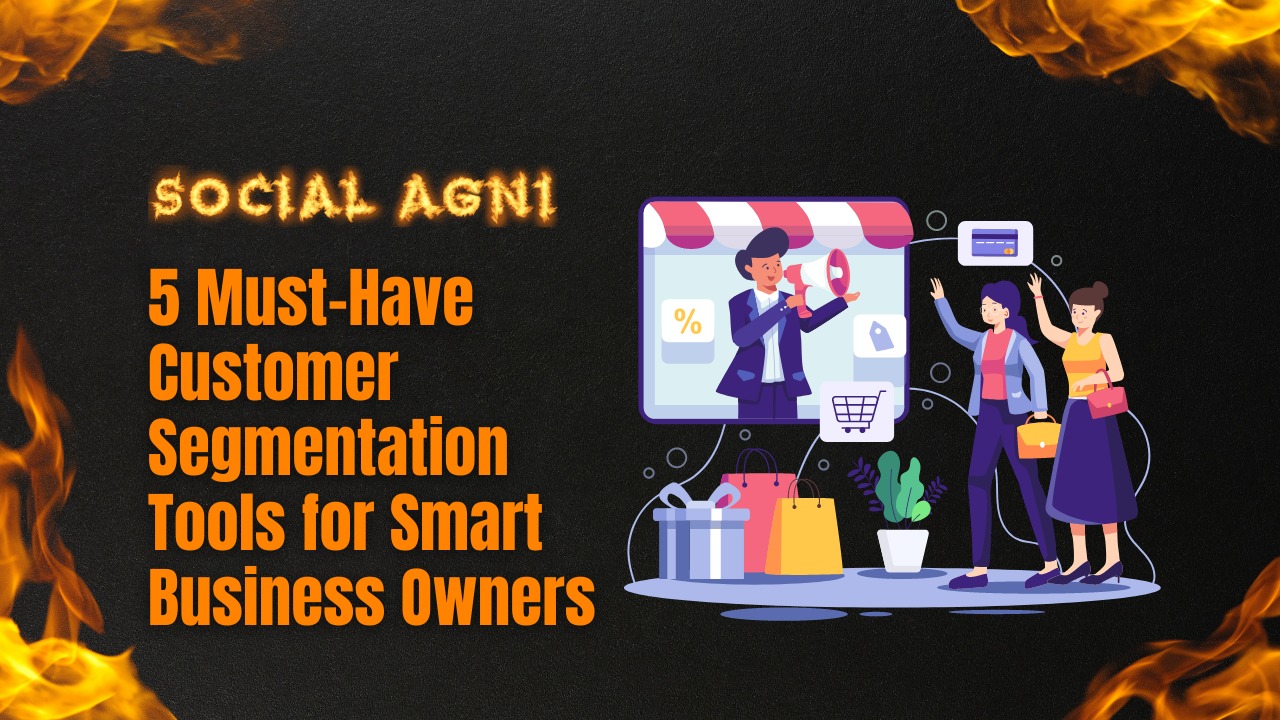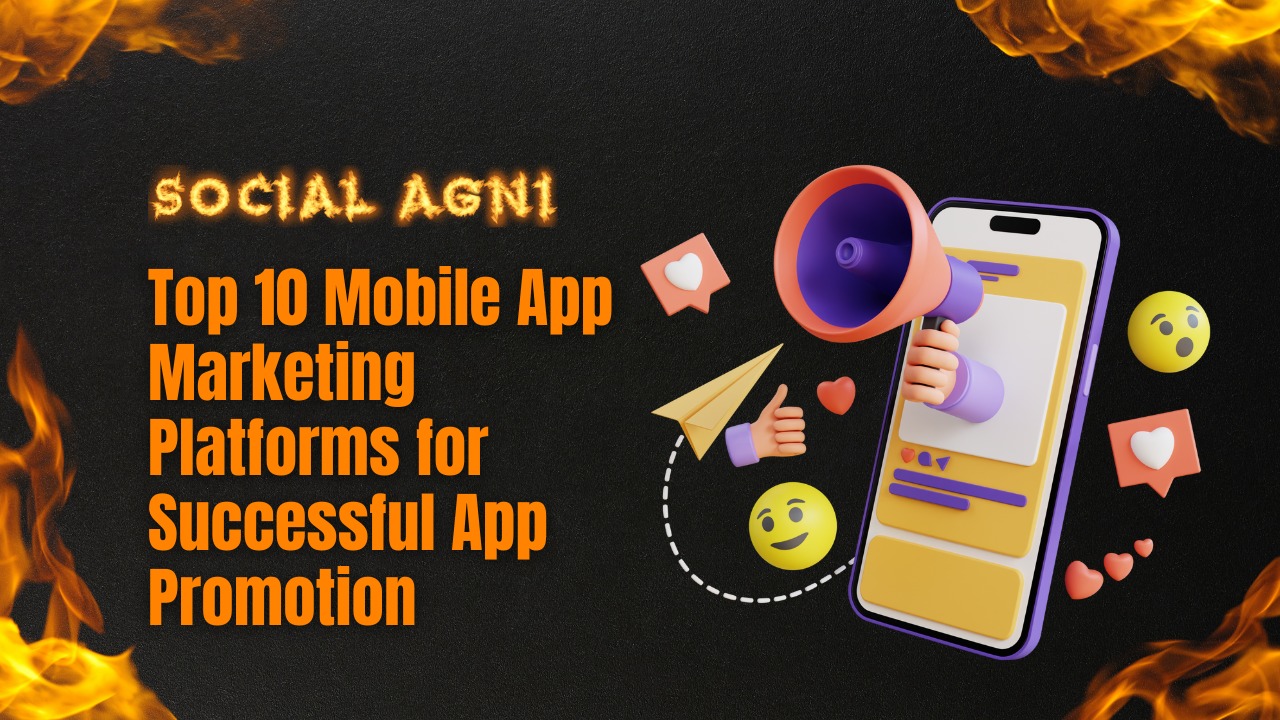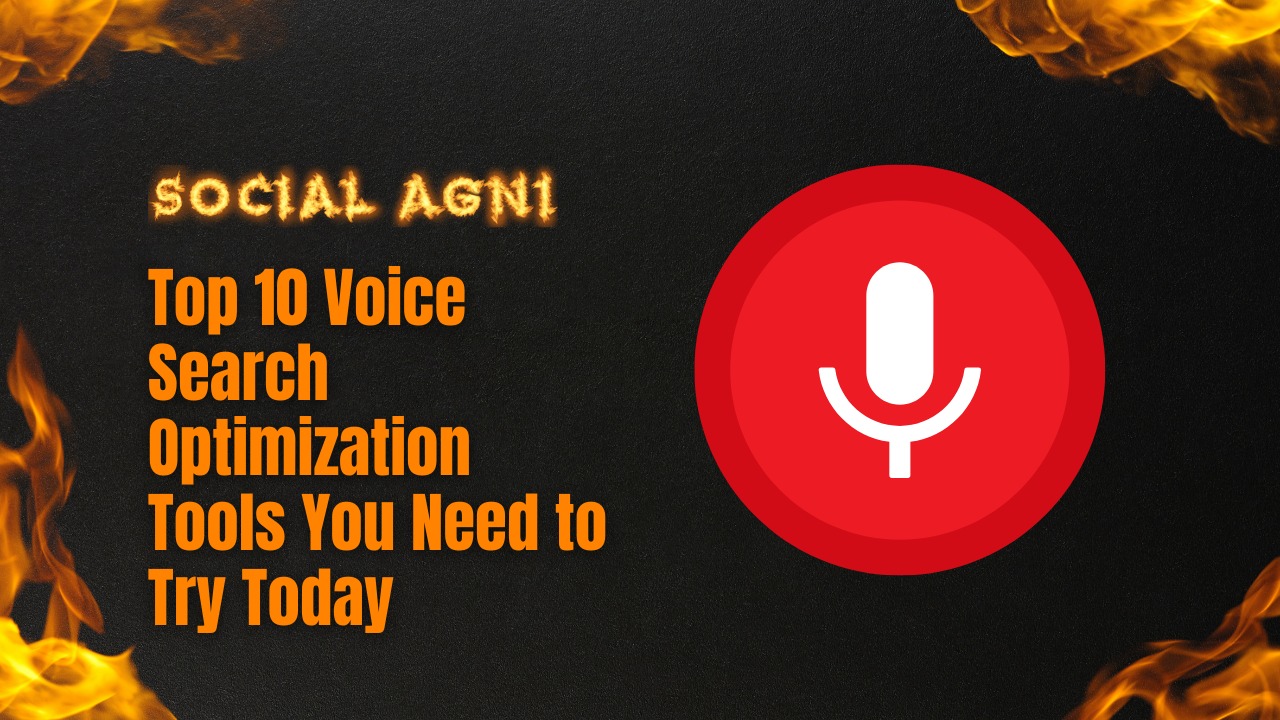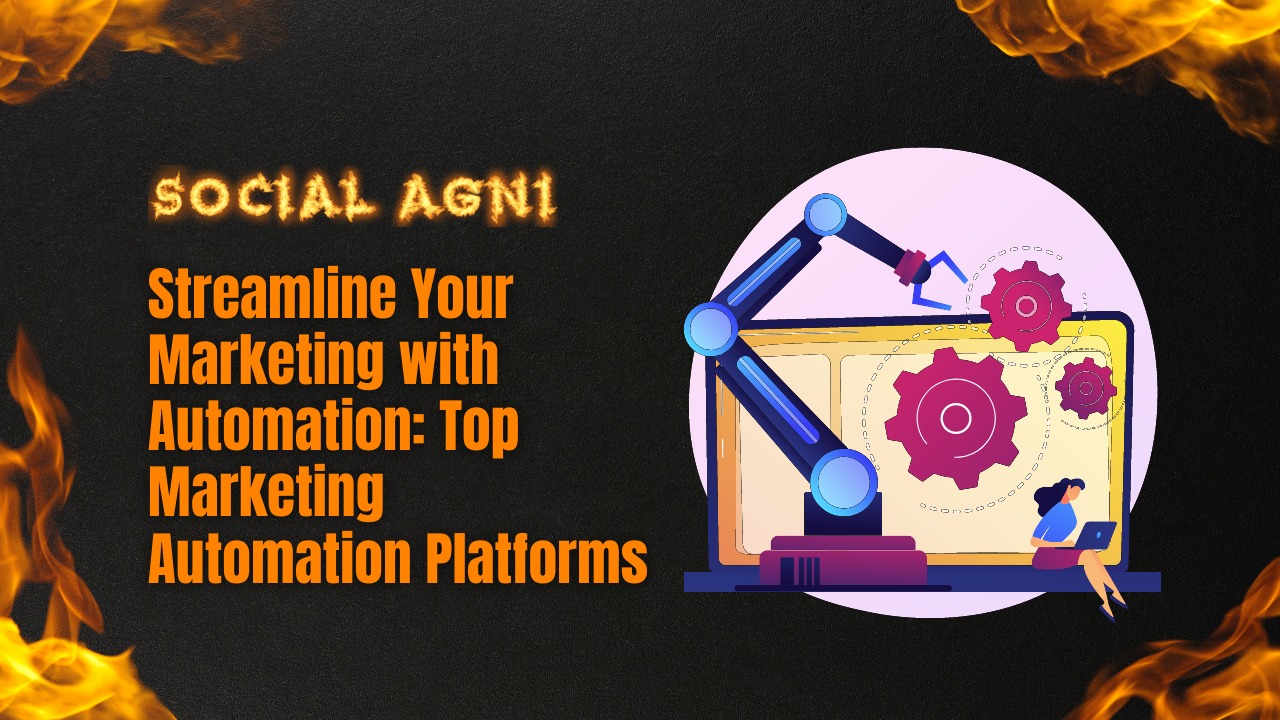Influencer marketing is a strong tool for organizations to reach and interact with their target audience in today’s digital age, as social media controls our lives and online content greatly influences consumer behavior. Brands may leverage influencers with large internet followings to advertise their products and services. With so many influencers and so many partnerships, managing influencer marketing campaigns may be difficult. Influencer marketing platforms help. These platforms match marketers with qualified influencers and provide tools and resources to ease the process. Influencer marketing platforms increase brand reach and engagement. These platforms let companies find and engage with relevant influencers in their expertise and sectors. These influencers may help marketers reach more people and increase product visibility. Influencer marketing systems simplify campaign administration with several capabilities. These platforms let businesses and influencers communicate and collaborate, assuring campaign success. They track and analyze influencer marketing success to help companies make data-driven decisions. Consider network size, influencer screening, campaign customization, and price plans when picking an influencer marketing platform. Choose the platform that best meets your brand’s goals and needs. This post will discuss five top influencer marketing platforms that boost brand reach and engagement. Brands may boost their online presence, interact with their target audience, and succeed online by using these platforms. 5 Influencer Marketing Platforms to Amplify Your Brand Reach and Engagement 1. InfluencerHub InfluencerHub, a leading influencer marketing platform, helps marketers increase brand exposure and engagement via targeted influencer collaborations. InfluencerHub simplifies influencer marketing for companies with its robust features and intuitive UI. InfluencerHub has a massive influencer database. The site has a huge network of influencers from many niches and sectors, allowing companies to discover the right match for their audience. InfluencerHub has influencers in fashion, beauty, fitness, and technology. InfluencerHub values authenticity and quality. The site screens influencers to guarantee they’re trustworthy. Brands may gain audience trust and conversions by partnering with trustworthy influencers. Campaign management is another InfluencerHub highlight. The platform helps brands design and manage influencer campaigns. InfluencerHub streamlines campaign execution by defining objectives, and tracking deliverables, and performance. The tool also facilitates real-time cooperation between companies and influencers. InfluencerHub provides analytics and reporting to maximize influencer efforts. Brands can track their campaigns, measure reach, engagement, and conversions, and obtain important insights about their influencer marketing efforts. Data-driven strategy optimization and resource allocation help brands. InfluencerHub offers customizable pricing for brands. InfluencerHub features price choices for small businesses on a budget and large enterprises wanting a complete solution. Finally, InfluencerHub is a powerful influencer marketing platform that helps businesses grow their reach and engagement. InfluencerHub helps organizations find the appropriate influencers, generate meaningful interaction, and reach their marketing goals in the ever-changing digital world with its enormous influencer database, campaign management tools, and analytical analytics. 2. ReachRise ReachRise is a powerful influencer marketing tool that boosts brand reach and engagement. ReachRise provides a complete influencer marketing solution for businesses with its unique features and functions. ReachRise excels at targeting. The tool lets marketers filter influencers by demographics, interests, geography, and other variables. This specificity allows businesses to interact with influencers that strongly fit with their target demographic, maximizing campaign effect. ReachRise’s user-friendly interface streamlines influencer finding. Brands may find influencers on Instagram, YouTube, TikTok, and more. Influencer profiles and engagement data help marketers choose the best influencers for their campaigns. ReachRise’s solutions streamline campaign administration. The tool lets brands specify campaign goals, rules, and track influencer partnerships. Brands and influencers can easily communicate and meet campaign goals using the dashboard. Real-time engagement tracking by ReachRise optimizes influencer programs. Tracking likes, comments, shares, and conversions give brands campaign analytics. This data-driven method lets marketers assess influencer collaborations and plan future efforts. ReachRise emphasizes honest reporting and measurement. The tool gives businesses detailed information on influencer marketing ROI. Brands may improve their strategy and budget allocation by measuring KPIs and analyzing influencer relationships. ReachRise has affordable programs for businesses of all sizes. ReachRise offers customized pricing for startups and brands. ReachRise’s influencer marketing platform boosts brand reach and engagement. ReachRise helps associations find the appropriate influencers and achieve significant outcomes with its smart targeting, campaign management tools, real-time interaction tracking, and transparent reporting. 3. BrandConnect BrandConnect is a cutting-edge influencer marketing platform that helps businesses expand their reach and engagement. BrandConnect streamlines brand-influencer cooperation for effective marketing efforts. BrandConnect prioritizes genuine relationships between businesses and influencers. The site selects real and influential creators for its influencer network. Brands may build credibility and trust with their audience by working with trustworthy influencers. BrandConnect makes finding brand collaborators easy. The platform lets marketers search and filter influencers by specialty, audience demographics, engagement rates, and more. This customized strategy connects marketers with influencers who care about their industry or goods. BrandConnect streamlines communication and cooperation with qualified influencers. Built-in communications capabilities let businesses and influencers discuss campaign specifics, share creative ideas, and coordinate campaign goals. BrandConnect helps influencers grasp the brand’s messaging and generate engaging content by encouraging successful communication. BrandConnect also tracks and analyses influencer campaign results. Brands can track reach, engagement, CTRs, and conversions. This data-driven method lets marketers assess influencer relationships and optimize future initiatives. BrandConnect also offers extensive campaign management. The tool lets brands create goals, deliverables, and track influencer collaborations. The easy dashboard gives real-time information, allowing marketers to monitor their campaigns and make modifications. BrandConnect offers variable pricing to meet the demands and budgets of various brands. BrandConnect offers customizable solutions for small and large businesses. BrandConnect is a great influencer marketing tool that boosts brand reach and engagement. BrandConnect helps businesses connect with influencers and run successful influencer marketing campaigns with its authenticity, sophisticated search, collaboration, performance monitoring, and campaign management tools. 4. InfluencerLink InfluencerLink, a top influencer marketing tool, boosts brand reach and engagement. InfluencerLink’s broad network, flexible campaign choices, and streamlined processes make influencer marketing easy for companies. InfluencerLink has a large influencer network. Influencers from many domains and sectors are on the site. Brands may simply find and interact
Local SEO is essential for small businesses in today’s competitive digital environment. To attract local customers, small companies must maximize their internet presence. Local SEO tools are crucial. Local SEO solutions help small companies increase their online presence, search engine rankings, and focused visitors. These programs can handle local listings, keywords, citations, reviews, and competitors. GMB is a popular local SEO tool. GMB helps companies become listed in local search results via Google Maps. Businesses may enhance their chances of appearing in the “Local Pack” and attracting local clients by improving their GMB profiles with correct and up-to-date information. Local SEO tools include Moz Local. Businesses can manage their web listings across directories and platforms using Moz Local to ensure consistency. Search engines trust businesses that have consistent NAP (name, address, phone number) data across directories. Another top local SEO tool, Yext, lets companies manage their internet listings, monitor feedback, and interact with consumers. Yext helps companies ensure their information is correct and consistent across several directories, improving their local search results. BrightLocal tracks local search rank, builds citations and monitors reviews. Businesses may attract more clients by checking their local search rankings and developing citations on trusted directories. Local SEO tools like Whitespark develop local citations and manage reputations. Citations—website references of a business’s name, address, and phone number—impact local search rankings. Whitespark helps firms obtain relevant citations and manage their internet reputation. SEMrush, a popular SEO tool, supports local SEO. It lets companies analyze local keywords, enhance website content for local searches, and track local search results. Businesses may attract local clients by optimizing their websites for local keywords. Ahrefs, known for backlink analysis, has local SEO functions. Ahrefs can assess rivals’ backlinks, find link-building possibilities, and reveal competitor strategies. Businesses may improve local SEO by monitoring backlinks and analyzing competitors. Local SEO checklists provide a methodical approach. Local SEO checklists help companies optimize their websites, listings, and reviews. Businesses may avoid missing important local SEO steps by following a checklist. Raven Tools offers site audits, link building, and keyword research for local SEO. Local search success requires website audits, high-quality backlinks, and keyword targeting. Serpstat delivers keyword research and rank tracking for local SEO. Businesses may keep ahead of the competition by monitoring local search trends and keyword rankings. Google My Business Google My Business (GMB) helps businesses maintain their web presence and rank high in local search results and Google Maps. Its features and benefits can boost a small business’s visibility and consumer base. GMB lets companies construct a thorough profile including their name, address, phone number (NAP), website, hours of operation, and product or service descriptions. This information displays in Google’s Knowledge Panel when consumers search for relevant businesses, improving their chances of acquiring clients. Optimizing GMB profiles boosts local search results for companies. Google shows the “Local Pack”—a prominent area highlighting three local businesses—when consumers search for terms related to their business and region. GMB ensures accurate and consistent information to help companies appear in the Local Pack and be chosen by customers.\ GMB lets companies respond to client evaluations and ratings. Trust and trustworthiness from positive reviews and ratings might sway potential buyers. GMB engagement shows good customer service and can boost repeat business and word-of-mouth. GMB connects easily with Google Maps, allowing companies to appear in map searches. It helps customers obtain directions, photographs, and other critical information right from the map, making it especially useful for businesses with physical locations. Google Maps helps local businesses get clients. GMB lets companies publish and update their profile in search results. Special discounts, events, product updates, and other pertinent information can be posted. Businesses may increase website traffic and conversions by consistently posting entertaining and helpful content. GMB gives excellent data and statistics regarding user profile interactions. GMB dashboards let businesses measure views, searches, and activities like website visits and phone calls. These insights help firms understand their audience, gauge strategy efficacy, and make data-driven decisions. Moz Local Moz Local is a comprehensive local SEO tool that helps companies boost their online presence across directories and platforms. It has tools to boost local search visibility and attract local consumers. Local Listing Management: Moz Local helps companies manage their listings on Google, Facebook, Yelp, and more. Businesses may standardize NAP data across listings using Moz Local. Consistency helps search engines trust and confirm a business’s information, improving local search rankings. Listing Distribution: Moz Local’s Listing Distribution function distributes companies’ NAP data uniformly throughout directories, data aggregators, and web platforms. This automates updating and disseminating business information to relevant web directories, enhancing local search exposure. Review Monitoring: Moz Local lets companies respond to customer reviews across platforms from a single dashboard. Tracking customer reviews helps firms respond to bad evaluations and communicate with pleased consumers. Actively managing reviews build trust and credibility, affecting potential consumers’ image of the organization. Local Search Analytics: Moz Local analyzes local search performance for businesses. It shows how clients are discovering the business, which directories are most visible, and their search rankings over time. These insights assist organizations understand local SEO, discovering areas for development, and making data-driven decisions to enhance their strategy. Online Presence Score: Moz Local rates firms’ online presence. This score incorporates NAP data correctness and consistency, online review quantity and quality, and company information completeness. Businesses use the Online Presence Score to evaluate their local SEO and prioritize online visibility improvements. Local SEO Audit: Moz Local analyzes a business’s local SEO performance. It optimizes on-page SEO, website performance, mobile-friendliness, and more. Businesses may improve their website’s local search visibility and user experience by implementing audit suggestions. Yext Businesses can manage their web listings, customer feedback, and audience engagement with Yext, a strong local SEO tool. Yext enhances local search visibility and ensures accurate and consistent company information across numerous directories and platforms with a wide range of features and functions. Business Listing Sync: Yext’s Business Listing Sync lets companies maintain and update their NAP data across
Video advertising has become a great tool for organizations to engage target audiences and generate conversions. Online video consumption and social media platforms have made video commercials a marketing standard. They may aesthetically and emotionally engage viewers and leave a lasting impression. This article’s top 10 video advertising platforms give businesses several ways to promote their goods and services. These platforms have effective video ad campaigns and strong functionality to help firms reach their marketing goals. YouTube dominates video advertising. YouTube is the world’s second-largest search engine. It offers TrueView, bumper, and masthead advertisements for customizable, engaging campaigns. YouTube also offers precise targeting and advanced analytics to optimize ads and campaigns. Facebook, another social media giant, has a huge user base and extensive video ad targeting. Businesses can reach their target audiences and convert with in-feed videos and Stories advertisements with strong engagement rates. Facebook Ads Manager improves video ad campaigns with granular audience information. Businesses targeting younger audiences like Instagram’s aesthetically attractive and participatory environment. Businesses may engage customers with captivating video advertising embedded into feeds and Stories. Ad types and targeting choices maximize campaign effectiveness on the platform. LinkedIn is better for B2B marketing since it targets professionals. LinkedIn video advertising help companies build thought leadership and connect with decision-makers. Using job titles, industries, and firm sizes, the platform targets advertising to the right people. Businesses may employ short video advertising on Twitter, known for its real-time nature and wide reach. Businesses may reach and engage platform users by targeting certain interests and demographics. TikTok, a platform for short-form video content, has grown rapidly, particularly among younger users. TikTok’s large user base and innovative content forms including in-feed videos, customized effects, and hashtag challenges allow brands to generate viral video commercials. Snapchat’s fleeting nature allows marketers to produce unique, engaging vertical video commercials. Businesses can target specific audiences and monitor video ad success using Snap Audience Network and Snap Pixel. Vimeo, however, provides a high-quality, ad-free environment for creative brand promotion. For polished and professional video experiences, it lets businesses customize their video player, add calls-to-action, and get precise data. Wistia hosts customizes, and generates leads for videos. It integrates with marketing automation and CRM systems to let organizations of all sizes generate and distribute video content. Wistia’s features help organizations increase brand recognition and lead through compelling video experiences. Vungle is a top mobile app advertising and monetization platform for businesses targeting app consumers. Vungle helps businesses optimize their video ad campaigns in the mobile app ecosystem with smart targeting and performance data. YouTube YouTube is the premier video advertising platform for businesses, reaching more adults aged 18-49 than any cable network in the US with over 2 billion monthly logged-in users. YouTube, the world’s second-largest search engine, gives a unique chance to reach a huge audience and market products and services through video commercials. Massive User Base and Global Reach: Businesses looking to expand their reach find YouTube appealing. YouTube’s broad audience lets marketers focus their video adverts. YouTube’s global reach means your video adverts may reach millions of viewers globally. Variety of Ad types: YouTube offers many ad types for different advertising aims and user preferences. TrueView, a popular ad style, lets viewers skip the ad after a few seconds, guaranteeing marketers only pay for interested viewers. This style pushes marketers to provide engaging content in the first few seconds. Businesses can also use bumper advertising, which are non-skippable, six-second video ads on YouTube. Masthead adverts on YouTube’s homepage are highly visible. Targeting and Analytics: YouTube offers powerful targeting features to assist businesses target their video ads. Targeting through demographics, interests, keywords, and placements helps advertisers reach relevant viewers who are more inclined to interact. YouTube Analytics and Google Ads reporting track video ad performance. Views, engagement, click-through rates, and conversions help advertisers optimize their campaigns and make data-driven decisions. YouTube’s dominance in video advertising, large user base, numerous ad formats, accurate targeting choices, and comprehensive analytics tools make it essential for firms wishing to employ video ads. Businesses can reach a vast audience, enhance brand recognition, and achieve tangible outcomes by creating entertaining video content and using YouTube’s capabilities. Facebook Video Ads Businesses may exhibit their video advertising and reach a large audience on Facebook, which has over 2.8 billion monthly active users. Businesses wishing to maximize video ad campaigns can use Facebook’s sophisticated advertising capabilities and vast targeting possibilities. Popularity and High Engagement: Facebook’s popularity makes it a popular video platform. Autoplaying news feed videos engages users. Facebook video advertising may go viral by generating likes, comments, and shares, multiplying their reach. Variety of Ad types: Facebook provides many video ad types for different campaign goals and audience preferences. In-feed video advertising merges with real material in consumers’ news feeds, grabbing their attention as they scroll. Full-screen story advertising is visually engaging. Carousel video advertising and collection advertisements let businesses exhibit several items or create an interactive narrative experience on Facebook. Targeting and Detailed Audience Insights: Facebook advertising has excellent targeting. Video advertising may target demographics, interests, behaviors, and even bespoke audiences derived from consumer data. Facebook’s targeting tools let companies show their video advertising to viewers who are more likely to be interested in their products. Facebook delivers demographics, interaction analytics, and ad performance statistics to help businesses improve their targeting and video ad campaigns. Businesses could exploit Facebook’s enormous user base, strong engagement rates, numerous ad formats, accurate targeting choices, and extensive audience information for video advertising. Businesses may increase brand awareness, user engagement, and marketing goals by developing engaging video content and using Facebook’s advertising options. Instagram Video Ads Instagram, with over 1 billion monthly active users, is a prominent visual content platform that companies can utilize to successfully interact with their target audience through video advertisements. Visual Appeal and Younger Demographics: Instagram’s visual appeal and focus on aesthetics appeal to businesses trying to promote their brand through video advertisements. Instagram’s younger user base allows for millennial and Gen
Understanding and meeting consumers’ requirements is essential in today’s competitive business environment. Customer segmentation helps. Customer segmentation is grouping customers by demographics, behaviors, interests, and purchasing habits. Businesses may segment clients to better understand their target group, generate personalized marketing efforts, and offer personalized customer experiences. Manually analyzing and categorizing large amounts of client data is time-consuming and difficult. Customer segmentation tools help clever business owners efficiently and successfully segment their customers. Advanced algorithms and data analytics automatically find trends and categorize clients based on preset parameters. Customer segmentation tools give firms meaningful data to improve marketing and strategic decision-making. These technologies let company owners learn clients’ preferences, forecast their behavior, and send customized communications and offers. Personalization enhances client connections, satisfaction, loyalty, and business growth. This post will discuss five client customer segmentation tools that wise business owner should consider adding to their marketing arsenal. These tools were chosen for their popularity, usefulness, and segmentation insights. We’ll discuss each tool’s capabilities, benefits, and how they might improve consumer segmentation methods. To compete in today’s market, you must understand your clients and customize your marketing efforts. Let’s explore how customer segmentation tools may transform your business, boost customer engagement, and boost your success. 5 Must-Have Customer Segmentation Tools for Smart Business Owners Google Analytics Businesses utilize Google Analytics to segment customers. This application helps savvy business owners analyze client behavior, acquire data, and make marketing decisions. Google Analytics tracks and analyses website traffic. A tracking code on your website can reveal your users’ demographics, hobbies, and browsing behavior. This data lets you segment your audience by age, gender, geography, and interests. This segmentation lets you design focused marketing campaigns for certain consumer categories, improving conversions and sales. Google Analytics allows extensive segmentation beyond demographic and interest-based. Create unique segments based on online behaviors like buying, subscribing, or abandoning a basket. Granular segmentation lets you analyze client behavior and customize marketing campaigns. Google Analytics offers robust reporting and data visualization. Conversion rates, bounce rates, and average session time may be reported for each client category. These insights help you discover high-performing categories and allocate marketing efforts. Google Analytics integrates with Google Ads and Google Search Console, making it useful. Linking platforms improves client segmentation. Google Analytics may help you optimize ad targeting, find the most valuable keywords, and improve SEO. Smart business owners use Google Analytics for consumer segmentation. Demographic monitoring, custom segmentation, reporting, and interaction with other Google products help organizations understand their customers, improve marketing tactics, and boost outcomes. Google Analytics lets you maximize client segmentation and grow your business. HubSpot HubSpot is a strong marketing and CRM software with customer segmentation features. HubSpot capabilities allow savvy company owners to segment their audience and create personalized experiences to attract, engage, and delight clients. HubSpot’s Smart Lists categorize customers. Your contact attributes, behaviors, and engagement levels automatically refresh these dynamic lists. Smart Lists let you segment leads by status, geography, industry, or website behaviors. This degree of segmentation lets you target particular client categories with relevant and engaging messaging. HubSpot Workflows automates segmentation and nurturing. Workflows let you build custom actions based on criteria or behaviors. For instance, you may create a process that sends customized emails to clients who abandoned their shopping carts or allocates leads to sales reps based on industry or lead score. Automating these procedures lets you send timely and appropriate communications to diverse target segments, improving their experience and boosting conversions. HubSpot works with email marketing and social media platforms to enhance its segmentation capabilities. These connectors let you get data from many sources and optimize client groups. HubSpot’s CRM also consolidates client involvement history. This data may be used to categorize clients by the likelihood of conversion or special attention. Understanding each segment’s requirements and preferences allows you to create tailored marketing and offers that build connections and loyalty. Mixpanel Businesses use Mixpanel’s advanced consumer segmentation features. Mixpanel helps savvy business owners understand their customers and optimize their marketing tactics by recording events and analyzing user behavior. Event tracking powers Mixpanel’s client segmentation. This tool lets you track and analyze user behavior on your website or app. You may learn how various customer groups use your product or service by identifying and recording key business events. Customer segmentation relies on this data. Mixpanel enables behavioral segmentation beyond demographics. Segment your audience by activities, behaviors, and preferences. You can categorize consumers who have purchased, finished a specified onboarding procedure, or used certain product features. These behavioral categories let you customize marketing, offers, and user experiences for distinct consumer groups, improving engagement and conversions. Mixpanel offers funnel analysis and event monitoring. Funnels show you how users interact with your website or app. Tracking conversion rates at each funnel phase helps uncover user drop-offs and issues. This data optimizes user experience and identifies conversion-boosting initiatives. Cohort analysis from Mixpanel lets you group clients by shared traits or behaviors across time. Cohorts show how marketing campaigns, product improvements, and user behaviors affect customer retention, engagement, and income. Cohort data can help you tailor marketing to specific client segments. Mixpanel also lets you create detailed reports and dashboards with crucial KPIs for each consumer category. These insights let you assess marketing performance, discover trends, and optimize consumer segmentation methods. Finally, Mixpanel provides sophisticated consumer segmentation options for event tracking, behavioral analysis, and cohort analysis. These features help savvy business owners analyze their customers, optimize their marketing tactics, and create personalized experiences that boost engagement and conversions. Customer segmentation may boost business success with Mixpanel. Salesforce Marketing Cloud Salesforce Marketing Cloud delivers advanced customer segmentation. Salesforce Marketing Cloud’s capabilities let savvy business owners segment their consumer base for personalized and targeted marketing efforts. Salesforce Marketing Cloud’s contact data management is crucial. It stores consumer demographics, preferences, purchase history, and engagement indicators. This data lets you categorize customers by age, geography, purchase behavior, and interaction. Salesforce Marketing Cloud’s customer segmentation includes predictive intelligence. The platform analyses patterns and behaviors to
App success depends on mobile app marketing. Developers and companies are finding it harder to stand out and attract customers in app stores with millions of apps. Mobile app marketing platforms are vital. Mobile app marketing platforms provide tools, tactics, and resources to promote apps. These platforms boost app visibility, engagement, and downloads. They offer data, analytics, and advertising that help app owners target their customers and optimize their marketing efforts. App Annie is a leading app marketing platform. App Annie has market information, app performance tracking, and competition analysis. App Annie helps app owners analyze user behavior, optimize marketing methods, and improve app performance. Google Adverts, another strong platform, lets app developers advertise their apps with search, display, and video adverts. Developers may target users who are actively browsing for apps or display advertising based on their interests and demographics using advanced targeting. Google Ads offers powerful monitoring and analytics capabilities to optimize marketing campaigns. Facebook offers excellent mobile app marketing options. App owners may target demographics, interests, and behavior using Facebook Ads. The platform’s large user base and powerful tracking allow accurate targeting and retargeting of app-interested consumers. Apple Search Ads promotes App Store apps particularly. App owners may bid on keywords to boost exposure and attract people searching for comparable apps. Mobile ad exchange technologies like MoPub and IronSource allow app publishers to monetize their apps by presenting ads from several ad networks and demand sources. These solutions maximize income and user experience with extensive targeting and real-time reporting. Chartboost, Tapjoy, Unity Ads, and Vungle offer gaming app solutions. In-game advertising, incentivized videos, and high-quality video adverts boost user engagement and app installations on these platforms. Game creators can target the proper audience and maximize their ad campaigns using smart targeting. 1. App Annie App Annie is a renowned mobile app marketing platform that helps developers and marketers flourish in the competitive app industry. App Annie has become essential for app marketers due to its extensive range of features and capabilities. App Annie’s market intelligence is crucial. It offers thorough insights into app performance, user behavior, and market trends. App owners may utilize this data to analyze their target audience, user preferences, and growth potential. This market knowledge helps app owners make educated decisions and create efficient marketing strategies to reach their audience. App Annie offers app store optimization (ASO) solutions to boost app store presence. ASO lets app owners optimize metadata, keywords, and screenshots to boost app store search rankings. App Annie’s ASO solutions help boost app exposure, downloads, and users. App Annie offers competitive analyses. App owners may compare downloads, income, and engagement with competitors. This helps app owners assess their market position, strengths and limitations, and tactics to beat the competition. App Annie’s competition analysis helps app owners assess their performance, learn from successful rivals, and distinguish their products. App Annie’s user acquisition capabilities are notable. It helps app owners market and gets new users with advertising and campaign management. App Annie’s advertising tools allow app creators to reach their intended audience via social media, search engines, and ad networks. This boosts app downloads, exposure, and quality of consumers. App Annie also analyses app monetization. Revenue, in-app sales, and subscription models are covered. App owners may optimize their monetization methods, find revenue-boosting possibilities, and make data-driven decisions to maximize app profitability by analyzing this data. 2. Google Ads Google Ads is a powerful mobile app marketing platform that lets developers and marketers advertise their applications throughout Google’s large advertising network. Google Ads helps app owners target and drive app downloads with its broad reach and intelligent targeting. Google advertisements for mobile app marketing use search advertisements, which is a major benefit. App owners may rank high in Google search results for related phrases by establishing appealing ad campaigns and spending on relevant keywords. This boosts app exposure and targeted visitors, increasing downloads. Google Advertisements offers several mobile app marketing-friendly ad forms beyond search advertisements. Display advertisements let app owners advertise their app across a network of websites and mobile applications to attract people who are browsing or using relevant apps. This eye-catching advertising can get people to download the app. Google advertising video advertising is also effective. Video ads for mobile applications are entertaining and successful. App owners may generate engaging video advertising using Google’s video ad platform. This advertising can appear on YouTube, other mobile applications, and the Google Display Network, reaching a large audience. App owners may use sophisticated targeting with Google Ads. They may target consumers by age, gender, and location to display appropriate adverts. Google Ads also lets app owners create bespoke audiences based on user interests, behavior, and past app or website engagements. This detailed targeting guarantees app owners contact consumers most likely to be interested in their app, improving marketing campaigns. Google Ads also provides mobile app marketing campaign tracking and analytics. App owners may monitor impressions, clicks, app installations, and in-app behaviors. This data lets them assess ad performance, optimize campaigns, and make data-driven app marketing strategy decisions. 3. Facebook Ads Facebook Ads is a powerful mobile app marketing platform that gives developers and marketers several opportunities to promote their apps. Facebook Ads helps app developers target their customers and increase app downloads with its enormous user base and powerful targeting capabilities. Facebook Ads for mobile app marketing benefit from its large user base. App owners can reach billions of Facebook users. This helps app owners promote their software to a huge number of potential consumers. Facebook Ads has mobile app marketing-friendly ad types. Mobile app install ads are effective. These adverts boost Facebook app installation. App owners may develop aesthetically appealing adverts to entice people to download their app. Facebook advertisements include mobile app install advertisements, carousel ads, video ads, and collection ads. These formats help app owners to present their software creatively and engage consumers, boosting app downloads. Advanced targeting is a Facebook Ads highlight. App owners may target adverts by age, gender, location,
The rise of voice search technology has transformed the way people interact with the internet. With virtual assistants like Siri, Alexa, and Google Assistant becoming increasingly popular, optimizing your website for voice search is crucial for staying ahead in the digital landscape. To help you enhance your voice search presence, we have curated a list of the top 10 voice search optimization tools that you need to try today. These tools will not only improve your website’s visibility in voice search results but also enhance the overall user experience. 1. SEMrush Voice Search Analytics SEMrush Voice Search Analytics is a comprehensive tool that enables you to analyze and optimize your content for voice search. It provides valuable insights into voice search trends, featured snippets, and top-ranking voice search queries. With this tool, you can identify keywords and phrases that resonate with voice search users and tailor your content accordingly. Moreover, SEMrush Voice Search Analytics allows you to track your website’s performance in voice search results and compare it with your competitors. By monitoring key metrics such as visibility, ranking positions, and organic traffic generated from voice search, you can assess the effectiveness of your voice search optimization strategy. This tool also provides recommendations on how to improve your content for better voice search performance. 2. Google’s Voice Search Quality Rater Guidelines Google’s Voice Search Quality Rater Guidelines are an invaluable resource for understanding how Google evaluates voice search results. These guidelines provide detailed instructions for human raters who assess the quality of voice search responses. By familiarizing yourself with these guidelines, you can gain insights into Google’s ranking factors and align your content accordingly. The guidelines emphasize the importance of providing accurate, relevant, and concise answers to voice search queries. They also highlight the significance of natural language, user intent, and context. Adhering to these guidelines can help you create content that satisfies user expectations and aligns with Google’s standards, thereby increasing your chances of appearing in voice search results. 3. AnswerThePublic AnswerThePublic is a popular tool that helps you discover the most commonly asked questions related to your industry or niche. It generates an extensive list of queries based on the autocomplete suggestions from search engines like Google. By incorporating these questions and answers into your content, you can address the specific queries that voice search users are likely to ask, thereby increasing your visibility in voice search results. AnswerThePublic also provides valuable insights into the variations and related keywords associated with your target queries. This information enables you to create comprehensive and informative content that covers a wide range of user inquiries. By catering to diverse search intents, you can position your website as a reliable source of information for voice search users. 4. LongTailPro LongTailPro is a popular keyword research tool that specializes in finding long-tail keywords. With voice search often being more conversational and question-based, targeting long-tail keywords becomes crucial. LongTailPro provides detailed keyword analysis, competition metrics, and search trends, helping you uncover valuable long-tail keywords for voice search optimization. By focusing on long-tail keywords, you can cater to specific user intents and address niche topics. LongTailPro’s keyword analysis helps you identify low-competition keywords that are highly relevant to your content. By incorporating these keywords strategically, you can improve your chances of ranking well in voice search results and attract targeted traffic to your website. 5. WordStream WordStream is a comprehensive digital advertising platform that offers a variety of tools to optimize your voice search strategy. While primarily known for its pay-per-click (PPC) advertising features, WordStream also provides valuable resources for voice search optimization. One of the key features of WordStream is its keyword research tool. It enables you to identify relevant keywords and phrases that align with voice search queries. By understanding the language and phrases used by voice search users, you can create content that directly addresses their needs and queries. Additionally, WordStream offers a range of features to enhance your overall search engine optimization (SEO) efforts. It provides recommendations for optimizing your website’s structure, meta tags, and content to improve your visibility in both text-based and voice-based searches. By implementing these recommendations, you can enhance your website’s chances of appearing in voice search results. 6. ClearScope ClearScope is a powerful content optimization tool that can greatly benefit your voice search optimization efforts. This tool focuses on providing data-driven insights to help you create high-quality content that resonates with both users and search engines. ClearScope utilizes artificial intelligence and natural language processing to analyze search engine result pages (SERPs) and identify the most relevant keywords and topics for a given query. By understanding the language patterns and context of voice search queries, ClearScope helps you optimize your content to align with user intent. 7. Hit Tail Hit Tail is a unique keyword research tool specifically designed to help you optimize your content for long-tail keywords, making it a valuable addition to your voice search optimization toolkit. Long-tail keywords are particularly relevant for voice search queries due to their conversational nature. The core functionality of Hit Tail revolves around analyzing your website’s existing traffic and generating long-tail keyword suggestions based on actual search queries that are driving visitors to your site. By identifying these specific queries, you can gain insights into the language and phrasing that users are using when conducting voice searches. 8. Term Explorer Term Explorer is a robust keyword research tool that provides comprehensive insights and analysis to optimize your content for voice search queries. It offers a wide range of features that help you identify relevant keywords, understand user intent, and track your performance in voice search results. One of the key features of Term Explorer is its ability to generate long-tail keywords. Long-tail keywords are crucial for voice search optimization as they often reflect the conversational nature of voice queries. Term Explorer provides an extensive list of long-tail keywords related to your industry or niche, enabling you to target specific user intents and create content that directly addresses their
In cutting-edge fast-paced digital world advertising and marketing automation has ended up an important tool for agencies of all sizes. By leveraging technology to automate repetitive marketing responsibilities, corporations can save time, increase efficiency, and deliver personalized experiences to their customers. With the plethora of advertising automation systems available, deciding on the right one for your enterprise can be overwhelming. In this article, we will explore some of the top advertising automation systems that may help streamline your advertising efforts and drive results. HubSpot HubSpot is a complete advertising automation platform that gives a wide range of functions to assist businesses attract, have interaction, and delight customers. One of HubSpot’s key strengths is its all-in-one technique, combining CRM, advertising automation, income, and customer service equipment right into a unified platform. This integration allows for seamless data sharing and collaboration across teams, resulting in a cohesive and streamlined marketing strategy. With HubSpot, you can create personalized email campaigns tailored to specific customer segments. The platform provides pre-built email templates, automated workflows, and A/B testing capabilities, making it easy to optimize your email marketing efforts. Additionally, HubSpot’s lead nurturing tools enable you to automate the process of engaging with leads and guiding them through the sales funnel. By delivering relevant content and timely follow-ups, you can increase conversions and drive revenue. HubSpot’s content management system (CMS) allows businesses to build and optimize landing pages, blogs, and website content. Its user-friendly drag-and-drop editor requires no coding knowledge, empowering marketers to create engaging and visually appealing web pages. The CMS also includes SEO optimization tools, helping your content rank higher in search engine results and attract organic traffic. Furthermore, HubSpot offers social media management capabilities, allowing you to schedule and publish posts across multiple platforms from a single dashboard. You can track engagement metrics, monitor brand mentions, and analyze social media performance, providing valuable insights to refine your social media strategy. With HubSpot’s robust analytics and reporting capabilities, you can measure the achievement of your advertising campaigns and make data-driven choices. The platform provides comprehensive metrics on website traffic, email performance, lead generation, and customer behavior. These insights allow you to optimize your advertising efforts, perceive areas for improvement, and allocate assets successfully. Marketo Marketo is an effective advertising and marketing automation platform that caters to the needs of each B2B and B2C marketer. Known for its advanced capabilities, Marketo empowers businesses to create personalized, targeted campaigns that drive engagement and conversions. One of Marketo’s standout features is its lead management functionality. The platform allows you to capture, nurture, and score leads based on their interactions and behaviors. By implementing lead scoring models, you can prioritize leads and focus on those with the highest potential, maximizing your sales efforts. Marketo also provides lead nurturing tools, enabling you to automate the delivery of relevant content and personalized messages at each stage of the buyer’s journey. In addition to lead management, Marketo offers robust email marketing capabilities. You can create visually appealing email templates, segment your audience, and automate email campaigns based on triggers or predefined workflows. Marketo’s A/B testing functionality allows you to experiment with different subject lines, content variations, and send times to optimize email performance and increase open and click-through rates. Social media marketing is another area where Marketo excels. The platform enables you to schedule, publish, and analyze social media posts throughout more than one platform. You can monitor conversations, engage along with your audience, and measure the impact of your social media efforts.Marketo’s social listening feature allows you to track brand mentions, hashtags, and industry trends, providing valuable insights for your marketing strategy. Marketo’s analytics and reporting capabilities offer in-depth insights into your marketing performance. You can track key metrics such as campaign ROI, conversion rates, and revenue attribution. Marketo’s integration with Salesforce CRM allows for seamless data synchronization between marketing and sales teams, facilitating better alignment and collaboration. ActiveCampaign ActiveCampaign is a versatile marketing automation platform that caters to businesses of all sizes. It offers a wide range of automation features, making it a popular choice for marketers looking to streamline their marketing efforts. ActiveCampaign’s email marketing capabilities allow you to create personalized email campaigns, segment your audience, and automate email sequences. The platform provides a visual automation builder, where you can design complex workflows based on customer behavior and triggers. This allows you to deliver targeted messages to the right audience at the right time, increasing engagement and conversions. One of ActiveCampaign’s key strengths is its CRM functionality. The platform provides a robust customer database, allowing you to store and manage customer information, track interactions, and gain insights into individual customer journeys. This holistic view of your customers enables you to deliver personalized experiences and build stronger relationships. ActiveCampaign also offers lead scoring and tagging features, helping you identify the most engaged and qualified leads. By assigning scores to various actions and behaviors, you can prioritize follow-ups and tailor your marketing efforts to individual lead preferences. The platform’s tagging system allows for advanced segmentation, ensuring that you can deliver highly relevant content and offers to specific audience segments. In addition to email marketing and CRM, ActiveCampaign provides automation features for SMS marketing, site tracking, and social media integration. The platform’s SMS marketing capabilities allow you to engage with your audience through text messages, providing another channel to nurture leads and drive conversions. Site tracking enables you to monitor customer behavior on your website, gaining valuable insights into their interests and preferences. Integrations with popular social media management platforms allow you to automate social media posting and track social media interactions. GetResponse GetResponse is a popular marketing automation platform that offers a wide range of features to help businesses streamline their marketing efforts and drive better results. With its user-friendly interface and complete set of tools, GetResponse is suitable for both small companies and large businesses. One of the key features of GetResponse is its email marketing capabilities. The platform provides a drag-and-drop e mail editor, making it smooth
In today’s fast-paced digital environment, website speed determines online company success. Slow-loading websites annoy users, resulting in high bounce rates, lower user engagement, and lost income. Google also ranks web pages based on speed. Thus, firms must optimize website speed to compete online. Website speed optimization improves loading and performance. It involves several methods, tactics, and, most significantly, optimization tools. These tools help website owners find performance issues and execute remedies. Website speed optimization techniques improve efficiency. These solutions automate complicated procedures, letting website owners focus on other business matters. Developers and website managers may use these tools to discover performance issues, assess their causes, and make required modifications without sophisticated code. Website speed optimization solutions also give detailed data and insights to help consumers track their website’s performance. These programs provide comprehensive page load time, time to first byte, and other performance metrics data. Website owners may utilize this data to understand their site’s strengths and flaws and improve the user experience. Website speed optimization becomes more important as mobile internet users increase. Slow-loading websites frustrate mobile users, who may quit them. Website performance optimization solutions optimize for mobile devices, screen sizes, and network circumstances. This post will cover the best website performance improvement tools. We will discuss their features, use, and successful implementations. We’ll also cover other website speed optimization methods to help you improve performance and user experience. Jump in! Understanding Website Speed Optimization Website speed optimization improves loading and performance. It reduces website load times, latency, and user experience using a variety of methods. Faster websites enhance user experience, SEO, conversion rates, and company success. Website performance optimization is millisecond-sensitive. Studies reveal that people quit slow-loading websites. If a website takes more than three seconds to load, Google says over half of visitors will quit. To keep visitors, engage them, and achieve commercial goals, website owners must emphasize speed improvement. Understanding website speed variables is crucial to optimizing them. Important performance metrics include: Page Load Time: The time it takes a browser to load a webpage. It involves loading HTML, CSS, JavaScript, pictures, and other webpage resources. Time to First Byte (TTFB): A user’s browser receives the first byte of data from the website’s server. Server response, network delay, and other variables affect it. Render Blocking Resources: CSS and JavaScript resources might delay website rendering, slowing load times. Optimizing resource supply and use can boost website speed. File Sizes and Compression: Large pictures, scripts, and stylesheets can increase load times. These files can be compressed and optimized without losing quality. Server and Hosting setup: Website performance depends on the server and its setup. Server location, response time, caching, and CDNs are important. Website owners may enhance their website’s speed by monitoring these performance data and fixing the underlying issues, improving user experience and business results. The Benefits of Using Website Speed Optimization Tools Website owners and developers can benefit from website speed optimization solutions. These tools are meant to simplify optimization, give insights, and help implement solutions. Let’s examine the website performance optimization tool benefits: Efficiency and Effectiveness: Dedicated website speed optimization solutions automate complicated activities and procedures, making optimization more efficient and effective. These tools identify performance measurements, bottlenecks, and improvement suggestions. These tools save website owners time and effort assessing and optimizing website performance. Time Savings: Website speed optimization solutions streamline the optimization process, saving developers and owners time. These tools guide users through optimizing file sizes, caching, and coding using an easy-to-use interface. These solutions automate optimization so website owners may focus on other business matters. Website Performance Metrics: Website speed optimization solutions give thorough performance metrics. These tools report page load time, TTFB, and render-blocking resources. Website owners can analyze this data to discover areas for improvement and prioritize them. Mobile Optimization: As mobile internet use grows, mobile optimization is essential. Website speed optimization solutions frequently include mobile-specific features and recommendations. These tools examine mobile data like load speeds and responsive design compatibility to deliver mobile-specific insights and adjustments. These technologies help website owners optimize user experience across devices. Continuous Monitoring and Alerts: Many website performance improvement software offer continuous monitoring and notifications. These programs periodically check a website for performance concerns and notify the owner or developer. Website owners may immediately fix performance issues and maintain good performance by getting real-time warnings. Benchmarking and Comparison: Website performance improvement solutions generally include benchmarking and comparison. These capabilities let website owners compare their performance to industry standards or competitors. Webmasters may set goals, measure progress, and improve via benchmarking. Accessibility and User Experience: Fast-loading websites improve user experience and accessibility for all users, even those with slower internet connections. Website speed optimization tools discover accessibility issues and provide fixes to guarantee all users can swiftly explore the website. Top Website Speed Optimization Tools Several tools help website owners and developers optimize website speed. These tools assess, diagnose, and optimize website performance with many capabilities. Today’s best website performance optimization tools are: 1. Google PageSpeed Insights Google’s free tool examines web page speed and suggests improvements. It scores mobile and desktop websites using performance indicators. It analyzes server response time, render-blocking resources, image optimization, and browser caching. Effective tool use: Enter the URL of the website or pages you wish to study, and Google PageSpeed Insights will deliver a complete analysis with speed-improvement suggestions. The application delivers practical information and advice on fixing difficulties. 2. GTmetrix Features GTmetrix analyzes a website’s performance. It provides detailed information on page load time, page size, requests, and other performance indicators. GTmetrix also suggests optimizing images, using browser cache, and minifying CSS and JavaScript. GTmetrix will examine your website and provide performance data and optimization suggestions. The application lets you evaluate your website’s performance from numerous locations and browsers, giving you a complete picture. 3. Pingdom Website Speed Test Pingdom Website Speed Test analyzes and monitors website performance. It details website load time, file sizes, and requests. Pingdom gives performance scores and suggests reducing redirection, enabling compression,
Online reputation management is essential to corporate success in the digital era. The Internet and social media affect a company’s reputation. Online reputation management involves actively establishing a favorable brand image, preserving brand integrity, and gaining consumer trust. Strong internet reputations may boost a firm. It may retain consumers, attract new ones, and influence purchases. A bad internet reputation may damage credibility, client trust, and profitability. Thus, firms must invest in effective online reputation management technologies and techniques. To monitor, evaluate, and govern brand narratives online, several online reputation management solutions are available. These technologies let businesses monitor online reviews, detect concerns, and connect with consumers to maintain a favorable online presence. Online reputation monitoring is vital. These technologies monitor brand mentions on social media, news sites, blogs, and forums. Companies can immediately spot bad brand mentions and sentiment research and take action. Online reputation management also requires social media management tools. Businesses must actively connect with their audience, reply to client inquiries, and actively maintain their social media presence due to the extensive usage of social media. Schedule postings, measure interaction data, and analyze brand sentiment using social media management tools. Businesses must monitor and manage social media and consumer evaluations and comments. Review and feedback management technologies let firms gather and manage customer evaluations from several platforms, respond to feedback quickly, and address concerns to maintain a favorable brand image. Online reputation management includes crisis preparation. Online crisis management technologies enable companies to monitor and respond to emerging concerns, limit bad information, and safeguard their brand reputation during difficult times. SEO is vital to online reputation management. SEO tools increase search engine rankings, brand visibility, and online presence. Companies may eliminate undesirable and detrimental content from search engine rankings by using efficient SEO methods. Brand monitoring and sentiment analysis technologies also reveal customer brand perception. These tools help companies understand how their brand is regarded, identify areas for development, and make educated reputation-boosting decisions. Online Reputation Monitoring Tools Brand reputation management relies on internet reputation monitoring technologies. These solutions let businesses monitor social media, news websites, blogs, forums, and review sites. By regularly monitoring brand mentions and sentiment analysis, firms may swiftly discover and manage unfavorable or detrimental information. Online reputation monitoring tools: Google Alerts Google’s free product delivers email notifications when it indexes new content related to a term or brand name. Brand, product, industry, and other relevant phrases can be set up as alerts. Google Alerts lets companies monitor web mentions and brand sentiment. Brand24 Brand24 monitors brand references online in real-time. Sentiment, influencer, and competitor analyses are available. Brand24 lets organizations measure social media mentions, hashtags, consumer sentiment, and audience engagement. Mention Mention lets companies watch brand mentions and keywords in real-time on social media. Users may watch social media, news, blogs, and more on its easy interface. Mention provides sentiment analysis, competition analysis, and reputation management reports and notifications. Hootsuite This famous social media management program also monitors. Track brand mentions, industry keywords, and hashtags across social media using streams. Hootsuite helps companies manage their reputation by tracking brand mentions, engaging with customers, and collaborating with colleagues. Businesses may learn about their brand’s internet reputation using these tools. Businesses may improve their internet reputation by monitoring brand mentions, sentiment, and trends. Social Media Management Tools Business reputation management requires social media management technologies. These solutions simplify scheduling, tracking brand mentions, audience engagement, and social media performance analysis. Popular social media management tools: Buffer Businesses use Buffer to schedule and publish posts on Facebook, Twitter, Instagram, LinkedIn, and Pinterest. Its user-friendly design, content planning calendars, and analytics track post performance and interaction. Businesses can communicate with customers and track brand mentions in real-time with Buffer. Sprout Social This social media management tool has several reputation management capabilities. It lets companies plan posts, track brand mentions, communicate with consumers, and assess social media performance. To understand the brand impression and sentiment, Sprout Social offers powerful reporting, analytics, sentiment analysis, and social listening. Hootsuite Hootsuite monitors online reputation and manages social media. It lets companies manage numerous social media accounts, plan posts, monitor brand mentions, communicate with audiences, and measure social media statistics. Hootsuite helps organizations manage their social media reputation by providing a central dashboard. HubSpot This marketing automation software manages social media. Businesses may schedule and publish social media posts, monitor brand mentions, communicate with followers, and track results. HubSpot’s social media analytics and reporting tools assess brand reputation. These social media management tools allow businesses to manage their social media presence and communicate with their audience from one place. Businesses may manage their online reputation and respond to consumer feedback by scheduling postings, tracking brand mentions, and assessing social media performance. Review and Feedback Management Tools Businesses need review and feedback management technologies to handle client feedback across platforms. These technologies let organizations gather, monitor, and analyze customer reviews to fix concerns, engage consumers, and maintain a favorable brand reputation. Review and feedback management tools: Trustpilot Trustpilot helps businesses collect and publish consumer reviews. Review invites, monitoring, and statistics are available. Trustpilot lets companies interact with customers, reply to reviews, and highlight good comments to create trustworthiness. Yotpo A complete review and consumer feedback tool. It collects and manages customer reviews, generates reviews, analyzes sentiment, and provides consumer insights. Yotpo helps businesses collect feedback, reply to reviews, and promote with favorable ratings. ReviewTrackers ReviewTrackers lets businesses collect and track client reviews from several internet platforms. It tracks reviews, analyzes sentiment, and manages responses. ReviewTrackers gives organizations a dashboard to track and respond to customer evaluations, providing proactive reputation management. BirdEye A complete customer experience and reputation management platform. Review monitoring, sentiment analysis, review production, and customer feedback management are available. BirdEye helps businesses gather feedback, respond to reviews, and improve their online reputation by utilizing positive customer experiences. These solutions help organizations manage their internet reputation by gathering consumer input, correcting issues, and highlighting favorable reviews. Businesses may improve customer satisfaction, brand reputation,
Content production and curation are crucial to effective marketing tactics in the ever-changing digital world. High-quality, engaging content attracts and retains audiences, builds brand visibility, and drives conversions for businesses and people. Without the correct tools, content production and curation may be time-consuming, difficult, and overwhelming. Fortunately, technology has made content generation and curation easier and more efficient. Content creation entails creating unique, useful, and relevant content for a specific audience. It includes articles, blogs, videos, infographics, and more. material curation entails locating, organizing, and distributing reliable material related to a theme or issue. Marketers may build credibility as industry experts by curating information for their consumers. Content developers and curators struggle to generate new ideas. It’s hard to remain ahead of the competition and create audience-friendly content. The quality of the material also attracts and keeps readers and viewers. Grammar, spelling, and aesthetics can lower text credibility and impact. Many content generation and curation solutions exist to solve these issues. These technologies help marketers, entrepreneurs, and content producers generate, curate, and share great content. These tools cover all aspects of content creation and curation, from idea generation to writing and editing to visual content creation and video editing. These technologies help content authors and curators save time and improve content quality and consistency. These technologies help marketers build thought leadership, engage consumers, and stand out in the digital space. This article discusses the best content generation and curation tools. These technologies will be examined for idea development, content finding, and organization. These tools will make content production and curation easier and more rewarding for both new and experienced content creators. Let’s explore content strategy-changing tools. Understanding Content Creation and Curation Digital marketing techniques require content production and curation. Understanding their distinctions helps maximize their potential. Content Creation Content production entails creating unique, quality material for a specific audience. It includes articles, blogs, social media updates, videos, infographics, podcasts, and more. Content production informs, entertains, educates, and inspires. Researching the target audience’s preferences, pain areas, and interests is essential when developing content. This research helps content providers create engaging, valuable material. information makers should also provide well-written, graphically appealing, and readily consumable information. Grammar, readability, narrative, and visuals/multimedia are important. Content Curation Content Curation, on the other hand, entails finding, collecting, and organizing material from multiple sources to deliver to an audience. information curators review online information to find the most relevant, useful, and informative things for their audience. Curating material for an audience’s interests, requirements, or industry adds value. Trusted curators weed out irrelevant or low-quality information, saving the audience time. Content curation can include blog postings, newsletters, social media posts, and Flipboard or Scoop. Top Content Creation Tools Content production tools may boost productivity, creativity, and quality. Top content creation tools Content Idea Generation Tools BuzzSumo Analyses social media engagements and search data to find trending content. Google Trends Tracks term popularity and search volume. AnswerThePublic Creates a visual map of popular inquiries about a term, revealing what your target audience is searching for. Writing Tools Grammarly Checks grammar, spelling, and readability. Hemingway Editor Highlights difficult sentences, passive voice, and adverbs to improve writing. ProWritingAid Analyses grammar, style, readability, and plagiarism. Visual Content Creation Tools Canva A user-friendly interface with a large library of templates, stock pictures, and graphic components for generating great graphics. Adobe Creative Cloud Professional-grade design tools, including Photoshop, Illustrator, and InDesign. Piktochart Creates attractive infographics and presentations using customizable templates and data visualization tools. Video Content Creation Tools Adobe Premiere Pro Advanced video editing software for high-quality videos. iMovie A simple Mac video editor. Animoto Create stunning films utilizing configurable themes, stock footage, and music tracks without video editing expertise. These are only a few content-generating tools. Explore other solutions that suit your content types and goals. Consider ease of use, functionality, workflow compatibility, and budget when choosing content production tools. To choose the right tools, check user reviews, watch tutorials, and use free trials or freemium editions. These best content production tools help simplify your content creation process and boost aesthetic appeal, writing quality, and audience engagement. Top Content Curation Tools Curation technologies help find, organize, and share trustworthy material. Top content curation tools Content discovery Feedly Aggregates and organizes material from numerous sources into configurable feeds, making it easier to follow industry trends and news. Pocket Saves and shares articles, movies, and other online material across devices. Flipboard Creates customized magazines from trustworthy publications and social media. Social Media Scheduling Hootsuite Schedules, manages, and analyses social media material across numerous platforms. Buffer Schedules and publishes social media material at opportune times, delivers engagement data, and includes Pablo, an image creator. Sprout Social Content scheduling, audience interaction, and performance statistics. Curation Platforms Scoop.it A platform for discovering, curating, publishing, and sharing topic-related material on social media. Curata Content curation and organization tools for newsletters, blogs, and resource centers. Flipboard Magazines Create and share aesthetically beautiful magazine-style compilations of articles, blog posts, videos, and other information. News Aggregators Google News Creates a personalized news feed from numerous sources depending on your preferences. SmartBrief Provides brief, industry-specific newsletters. Consider sources, ease of content discovery and organization, customization, analytics, and integration with other tools and platforms when choosing content curation solutions. Remember that good content curation requires a balance of your own original material and other curated content. These tools may help you uncover high-quality material to complement your knowledge, engage your audience, and develop your brand as an industry authority. Top content curation solutions simplify finding and sharing good material, save time, and present your audience with a curated assortment of resources that meet their needs. Benefits of Using Content Creation and Curation Tools Marketers, enterprises, and content marketing strategists can profit from content production and curation solutions. Key benefits Time-saving and Productivity Enhancement Content creation and curation tools save time and boost productivity. These solutions automate idea development, content discovery, and scheduling, freeing content producers and curators to focus on quality content and
